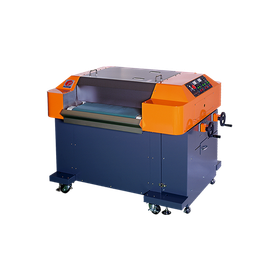Powder removal and clogging prevention hammering device.
No air is required. The impact force can be easily adjusted. The pause time can also be variable. It is capable of rapid firing from 1 to 10 times. Concentrated rapid firing has a significant effect on detaching stuck objects. It has a completely sealed structure, so it is resistant to failure even in unpleasant environments. The piston rod is lifted by magnetic force during impact, ensuring high durability. The control box is contactless, allowing it to withstand frequent use. The control box is equipped with external signal terminals for coordinated control.
Inquire About This Product
basic information
The Maghammer is a hammering device that uses the energy of an electromagnet to move the piston rod at high speed, delivering a powerful impact to the target object.
Price information
-
Delivery Time
P4
Applications/Examples of results
Removal of adhering powder and prevention of clogging.
catalog(1)
Download All CatalogsCompany information
Founded in 1943 as Fukumaki Iron Works, we established Japan Magnetics Co., Ltd. in 1983 by separating the magnet division from our predecessor, Fukumaki Machinery Manufacturing. Since then, we have been engaged in research and development for over 30 years, focusing on the development and manufacturing of permanent magnets and electromagnets used for separating materials such as iron powder and aluminum. ● Innovative, Extra-Large Ceiling Fans We began selling HVLS fans in September 2014. Have you heard of the term "HVLS fan"? HVLS (High-Volume, Low-Speed) fans are a new concept in air conditioning equipment that did not exist in Japan before. They are installed on the ceiling and rotate large blades slowly to distribute a large volume of air throughout indoor spaces. When combined with existing air conditioning systems, they can lead to energy savings of 20-30%, attracting attention worldwide. The idea was conceived by a venture company in the United States to address the decline in milk production due to summer heat, and it appeared on the market in 1998. Since then, they have been adopted in manufacturing plants and commercial facilities, with sales exceeding 100,000 units worldwide.










![Deburring Machine "Twin Baritor" [Eligible for Small and Medium Enterprise Productivity Investment Subsidy]](https://image.mono.ipros.com/public/product/image/6d3/2000308654/IPROS16685940644635288329.png?w=280&h=280)

